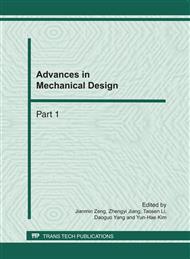p.1804
p.1809
p.1813
p.1819
p.1823
p.1827
p.1832
p.1836
p.1840
Effect of Chitosan Biguanidine Hydrochloride on Textile Properties of Antheraea Pernyi Silk
Abstract:
In order to improve the water-solubility of chitosan, chitosan biguanidine hydrochloride was synthesized by modified chitosan with dicyandiamide in the presence of hydrochloric acid. The guanidinylation chitosan was then applied to Antheraea pernyi (A. pernyi) silk fabric in the presence of 1,2,3,4-butane tetracarboxylic acid with sodium hypophosphite as catalyst. Studies on the effect of chitosan biguanidine hydrochloride treatment on morphology and textile properties of A. pernyi silk fiber and fabric have been conducted. The changes in the morphological structure have been monitored by scanning electron microscope. The changes in some of textile properties including wrinkle recovery angles and bacterial reduction owing to the treatment have also been investigated. It has been found that the surface of A. pernyi silk gets rough. The wrinkle-resistant performance improved, and the antibacterial activity of the treated A. pernyi silk fabric against E. coli was more than 99%.
Info:
Periodical:
Pages:
1823-1826
Citation:
Online since:
February 2011
Authors:
Price:
Сopyright:
© 2011 Trans Tech Publications Ltd. All Rights Reserved
Share:
Citation:


